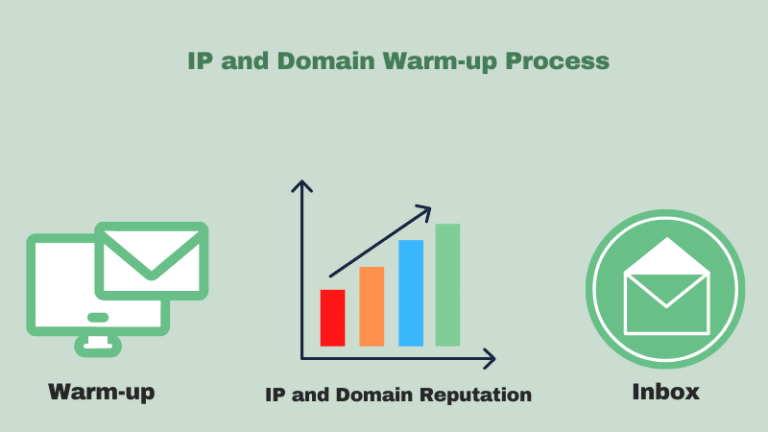
IP warm-up is the process of gradually increasing the volume of emails sent from a specific IP address over time. This helps build a positive reputation with email service providers (ESPs), ensuring that your emails are delivered to the inbox instead of being marked as spam.
| Week 1 | Daily Volume |
|---|---|
| Day 1 | 20 |
| Day 2 | 40 |
| Day 3 | 70 |
| Day 4 | 100 |
| Day 5 | 150 |
| Day 6 | 200 |
| Day 7 | 350 |
| Week 2 | Daily Volume |
|---|---|
| Day 8 | 500 |
| Day 9 | 750 |
| Day 10 | 1500 |
| Day 11 | 2000 |
| Day 12 | 3000 |
| Day 13 | 4000 |
| Day 14 | 5000 |
Deliverability to Yahoo!, AOL, and Gmail: Positive engagement metrics from a few initial sends can improve your chances of landing in the inbox. Regularly send emails to engaged subscribers to maintain a good reputation.
Handling Delays: Delays with ESPs like AOL, Microsoft, and Comcast are common. These providers may retry delivery for up to 72 hours; if unsuccessful, they will log a 421 error. Such delays are normal and will decrease as your IP reputation improves. If you experience frequent timeouts, consider reducing your email volume to that provider.
Avoiding Blocks: Blocks often occur when your email list isn’t sufficiently engaged. Careful segmentation is key to maximizing engagement and minimizing blocks.
Monitoring Metrics: Keep a close eye on your metrics throughout the warm-up period to optimize your strategy and achieve the best results.
Avoid Purchasing or Renting Poor-Quality Lists: These can contain spam traps that damage your sender reputation.
Remove Hard Bounces: Regularly clean your list to remove hard bounces, which can signal to ESPs that you are sending to invalid addresses.
Engage Inactive Subscribers: Try to re-engage subscribers who haven’t been active. If they remain unresponsive, consider removing them from your list to avoid potential issues.
Default Unengaged Subscribers: If attempts to reconnect with inactive subscribers are unsuccessful, it’s best to stop emailing them to maintain a clean list and protect your sender’s reputation.
MailCastle is a premier email marketing and automation platform designed to empower businesses with efficient, effective, and ethical communication tools. Our mission is to help you build meaningful connections with your audience through innovative email campaigns that drive results.





